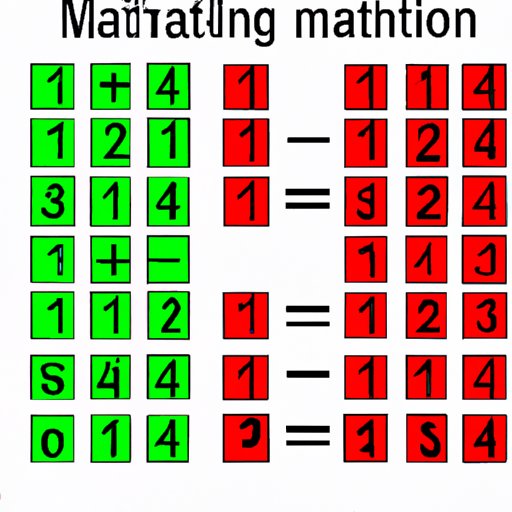
Introduction
Multiplication is an essential skill that is used in nearly every aspect of life, whether it’s calculating your monthly expenses or measuring ingredients for a recipe. Mastering multiplication is fundamental to advancing to more complex mathematical concepts. In this article, we will cover everything you need to know about multiplication, including the basic steps for multiplication, multiple methods for multiplication, common mistakes, real-world applications, and a historical perspective on multiplication.
Step-by-Step Guide
Multiplication is a simple concept that involves finding the product of two or more numbers. The basic process involves multiplying the digits in each place value and adding the results. For example, in 23 x 4, you would start by multiplying 3 x 4, which equals 12. The one is carried over to the second place value, and you then multiply 2 x 4, which equals 8. Finally, you add the two products together, which equals 92.
To multiply single-digit numbers, it’s essential to memorize multiplication tables up to 10. Once you master these, you can move on to larger numbers. For larger numbers, start by breaking them down into smaller digits and multiply the digits in each place value. Keep track of your numbers by writing them down or using a calculator.
Practice Exercises
Practice makes perfect, so we’ve included a series of practice exercises to test your multiplication skills. Start with simple problems and gradually increase the difficulty level. Use the answer keys and explanations provided to check your work and gain a better understanding of the problem. For further practice, we recommend using additional resources like online quizzes and math games.
Multiple Methods
There are multiple methods for multiplication, including the traditional method, the grid method, and the lattice method. The traditional method is the simplest and most widely used method, but it may not be the easiest for everyone. The grid method involves breaking down numbers and using visual aids to multiply. The lattice method involves drawing a grid and multiplying the digits in diagonal rows. Each method has its pros and cons, and finding the best method for you may require experimentation.
Real-World Applications
Multiplication is used in a variety of real-world scenarios, from calculating sales tax to measuring ingredients for cooking. Having a strong foundation in multiplication allows us to calculate more complex mathematical problems and make informed decisions. Practice multiplication skills in practical situations like shopping or cooking to solidify your knowledge.
Common Mistakes
Common mistakes made during multiplication include losing track of place value, multiplication tables mistakes, adding instead of multiplying, and not accounting for negative numbers. To avoid these mistakes, it’s essential to double-check your work, take breaks to clear your mind, and slow down to avoid rushing.
Historical Perspective
The history of multiplication dates back to Ancient Egypt, where hieroglyphs showed methods for multiplication. In the fifth century BC, the Greeks used a lattice method, and in the thirteenth century AD, Fibonacci popularized the Hindu-Arabic numeral system, which made multiplication much easier. Today, we have various methods and tools for multiplication, such as calculators and computers.
Learning Resources
There are many books, websites, and apps available for learning multiplication. We recommend resources that offer interactive lessons, step-by-step tutorials, and practice exercises. It’s also essential to find resources that align with your learning style and pace, so you can effectively gain and retain knowledge.
Conclusion
Multiplication can seem daunting, but with practice and patience, anyone can master it. From the basic steps to multiple methods and historical perspective, we hope this article has given you valuable insights into multiplication. Whether you’re a student or an adult looking to improve your math skills, remember that mastering multiplication can have a significant impact on your daily life. Keep practicing, and remember to have fun along the way.





